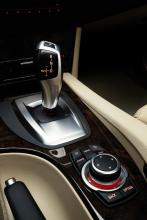utomotive supplier Faurecia and Stanford University's Center for Design Research, have formed a partnership aimed at studying potential behavioural changes in an autonomous vehicle. The organisations will share initial research findings at the Connected Car Expo during the Los Angeles Auto Show.
Faurecia and Stanford have identified several important challenges the industry must address to mitigate consumer apprehension to new driving modes: Creating a Confident Occupant Experience; Safely Enabling New
Automotive supplier Faurecia and Stanford University's Center for Design Research, have formed a partnership aimed at studying potential behavioural changes in an autonomous vehicle. The organisations will share initial research findings at the Connected Car Expo during the Los Angeles Auto Show.
Faurecia and Stanford have identified several important challenges the industry must address to mitigate consumer apprehension to new driving modes: Creating a Confident Occupant Experience; Safely Enabling New User Scenarios; Mitigating Motion Sickness.
Faurecia and Stanford believe these and other considerations will take an increasingly important role in the future development of autonomous transportation, with more attention placed on what's happening inside the vehicle.
Dr David Sirkin of the Stanford Center for Design Research and Matthew Benson of Faurecia's xWorks innovation centre will present their research, When Driving Becomes the Distraction: Putting the Occupant Back in the Mobility Conversation, at the Connected Car Expo on 17 November.
"As the automotive industry continues its march toward autonomous vehicles, most of its efforts have been focused on creating the technology that will enable auto-pilot functionality," said Rob Huber, vice president of innovation for Faurecia. "While this is an essential foundation, Faurecia is prioritising a parallel development track focused on how we enhance the mobility experience by improving life-on-board, making comfort, customisation and connectivity a priority."
"In partnering with Faurecia, we are taking the industry's first steps toward anticipating and averting problems that autonomous-car drivers may encounter in their transition from active controllers to multi-tasking occupants of vehicles," said Sirkin. "While the industry often considers the new technologies required to keep autonomous cars safely on course, these physiological issues will require their own approaches to vehicle design and engineering."
Faurecia and Stanford have identified several important challenges the industry must address to mitigate consumer apprehension to new driving modes: Creating a Confident Occupant Experience; Safely Enabling New User Scenarios; Mitigating Motion Sickness.
Faurecia and Stanford believe these and other considerations will take an increasingly important role in the future development of autonomous transportation, with more attention placed on what's happening inside the vehicle.
Dr David Sirkin of the Stanford Center for Design Research and Matthew Benson of Faurecia's xWorks innovation centre will present their research, When Driving Becomes the Distraction: Putting the Occupant Back in the Mobility Conversation, at the Connected Car Expo on 17 November.
"As the automotive industry continues its march toward autonomous vehicles, most of its efforts have been focused on creating the technology that will enable auto-pilot functionality," said Rob Huber, vice president of innovation for Faurecia. "While this is an essential foundation, Faurecia is prioritising a parallel development track focused on how we enhance the mobility experience by improving life-on-board, making comfort, customisation and connectivity a priority."
"In partnering with Faurecia, we are taking the industry's first steps toward anticipating and averting problems that autonomous-car drivers may encounter in their transition from active controllers to multi-tasking occupants of vehicles," said Sirkin. "While the industry often considers the new technologies required to keep autonomous cars safely on course, these physiological issues will require their own approaches to vehicle design and engineering."







